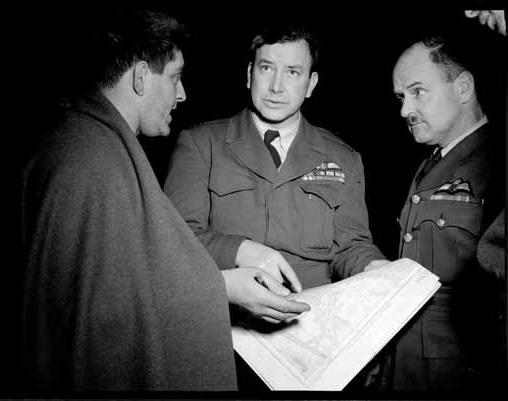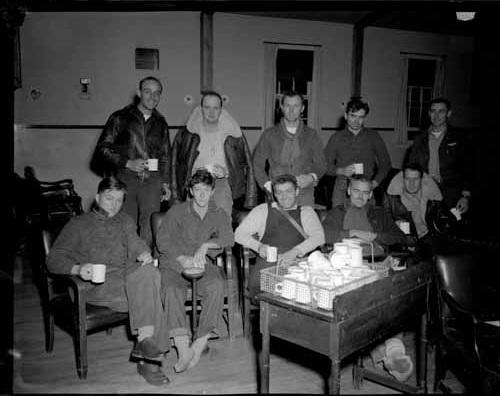In 1950 the world had already been entrenched in the Cold War for three years. The perceived threat of a homeland assault loomed overhead like an ominous storm cloud. Tensions were steadily rising between the United States and the USSR, and America prepared herself for nuclear conflict by executing practice missions. This is the story of a Broken Arrow – aka a failed nuclear mission – that went missing over British Columbia, resulting in the first nuclear weapon ever to be lost.
Bomb on board
In February 1950, the US military scheduled a flight plan for a Convair B-36B to depart a small airport near Fairbanks, Alaska and land at Carswell AFB in Fort Worth, Texas. The flight would travel south along the Alaskan panhandle, divert west over the Pacific Ocean (circumventing British Columbian airspace) and then inland over contiguous USA.
The flight would be a training exercise with the primary objective of performing a simulated nuclear strike, which would take place over San Francisco. Secondary was an interest in determining whether this particular aircraft could stand up to the frigid environmental conditions of a Siberian winter.
The mission was the first of its kind. On board the plane was a Mark IV atomic bomb, comparable in size to the one dropped on Nagasaki in 1945. The weapon contained a large amount of uranium and conventional explosives, but it was not armed with the plutonium core necessary for nuclear detonation.
The plane departed Alaska with 17 souls on board.
Fire in the sky
Sometime between the sixth and seventh hour of flight, the aircraft suffered major distress. Alarmingly, an engine fire had broken out and instruments were failing to provide accurate readings. The crew descended to 15,000 feet and made rapid Mayday transmissions, confirming an impending crash. The fire spread to a second engine and then a third. The Bomber was rapidly losing altitude. With only half of the engines functioning and such a heavy load on board, the crew decided to abandon the plane.
Before aborting, the nuclear bomb was dropped over the Pacific and the traditional explosives within it detonated. The aircraft was then piloted over Royal Princess Island (roughly speaking – geographically midway between Prince Rupert and Port Hardy) in hopes of crew members landing on solid ground. In a final act, the plane’s commander activated the autopilot, setting it to fly towards the open ocean.
Search & rescue
As soon as the crew had abandoned the crippled plane, the Royal Canadian Air Force initiated Operation Brix, a rescue mission to locate the missing airmen. Unfortunately, poor weather conditions negatively affected the search effort. About 25,000 square miles were canvassed, turning up just 12 of the 17 men. An overwhelming majority of the survivors were located by the Cape Perry, a local fishing boat. Three of the men had managed to take refuge in a rubber life raft.

Although the search continued into March, the plane and the five missing crew members couldn’t be located. Everyone assumed the missing men had drowned, likely succumbing to hypothermia, and that the plane had been swallowed by the icy waters of the Pacific.

The US government kept the plane’s military mission a secret; even their military records gave away little information. The US Navy declared the incident a Broken Arrow, their code word for an accident involving a nuclear weapon.
Hidden wreckage
Although the US government presumed this to be the conclusion of the Broken Arrow story, it was not the case. In 1953, while on a mission searching for Texas millionaire Ellis Hall’s missing plane, the Royal Canadian Air Force came across the wreckage of a B-36. It lay on the remote, sloped edges of Kologet Mountain, west of the Kispiox Valley in northern B.C.
Mount Kologet
It seemed the plane, while on autopilot, had made a loop over the ocean and veered inland. With the wreckage turning up so far from the expected crash site, some researchers believed the co-pilot remained on board the airplane, but it was never confirmed.
Once found, the United States Air Force immediately launched an investigation. In September 1953, a crew was sent to make the rugged trek to reach the plane’s remains. Unable to reach the site after a 19 day attempt, the crew turned back.
The following year, another effort to reach the downed plane was mounted. In August 1954, a team of USAF personnel, accompanied by a local guide, was able to successfully reach the wreckage. After recovering pertinent information and components from the plane, the crew proceeded to destroy all parts visible above the snow.
Both the American and Canadian Military kept the location of the crash a secret, although they were forthcoming with information regarding the operation itself.
A chance discovery
In 1956, two civilian surveyors happened upon the wreckage. It seems they kept mum on the location and the crash site was otherwise hidden for 40 years.
In 1997, one of those surveyors was able to provide the co-ordinates to two different expedition teams– one American and one from the Canadian Department of National Defense – both interested in conducting an environmental analysis at the site of impact. These crews were the first to lay eyes upon the wreck since 1956.
Salvage operation
The results of the expeditions concluded there were no elevated levels of radiation, and shortly thereafter, the location of the crash site finally became public knowledge. Locals began their own expeditions to salvage remains of the B-36, and many of the recovered articles went to museums in the area. In late 1998, the Canadian government declared the site to be protected. To this day, intrepid climbers still venture to the crash site.
As for the world’s first lost nuclear bomb, pieces of it likely remain at the bottom of the Pacific Ocean.
Why did the B-36 crash in the first place? The accident was ultimately attributed to ice build up which caused a flammable mixture of toxins in the exhaust systems.
Although this incident was the first of its kind, it certainly was not the last. Between 1950 and today, there have been many accidental detonations, as well as loss of materials, contaminations and injuries resulting from nuclear weapons.

